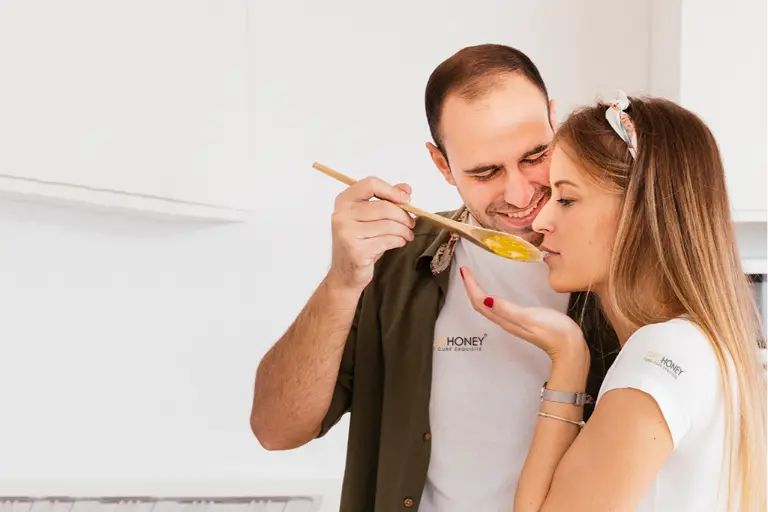- Tokyo: 10:41
- Singapore: 09:41
- Dubai: 05:41
- London: 01:41
- New York: 20:41
How to Spot a Fake Himalayan Salt Lamp

Himalayan salt lamps are getting increasingly popular all over the world for their amazing aesthetics and health benefits. These lamps are handcrafted from the authentic Himalayan salt that comes from the iconic Himalayas Mountain Range that spans across regions of Pakistan, China, Afghanistan, India, and Nepal, covering an area of about 1,500 miles. “The high demand and limited supply of the Himalayan salt lamps have led to many fakes circulating in the market, which is why you need to learn the difference between real and fake ones to save your money.” says the founder of Geohoney and the CEO of B A Barry Group, Mr Basem Barry. Using a poor-quality or fake lamp can do you more harm than good. The sub-par salts and chemicals used in these lamps can be potentially hazardous to your health. But don’t worry because, in this blog, we will help you spot fake Himalayan salt lamps in no time. The information you are about to receive will prove without a shadow of a doubt that the lamp you are about to buy is a fake, so stay tuned to learn more. A Little About Authentic Himalayan Salt Lamps Features of Real Himalayan Salt Lamps Tips to Spot a Fake Himalayan Salt Lamp Simple Tests to Spot a Fake Himalayan Salt Lamp Himalayan salt lamps are handcrafted hollowed-out chunks of salt rock that contain a dim electric bulb inside. These lamps produce a characteristic vibrant pink hue, which many people claim to have a calming impact. These lamps are believed to have many positive impacts on your well-being. Manufacturers claim that authentic Himalayan salt lamps can treat sleep disorders, reduce allergies, purify the air, and improve your mood. These lamps can attract water molecules from the surroundings and trap moisture, allergens, and pollutants making the air quality much better. These lamps also produce beneficial negative ions that neutralize harmful positive ions that are constantly being emitted by electronic devices like phones, TVs, and other smart devices. This way, the regular use of these lamps improves both your physical and mental health. Following are some key features of an authentic Himalayan salt lamp that you must look for before making the purchase. Real Himalayan salt lamps give out a warm and muted pink, orange, or reddish-orange glow. The authentic lamps tend to be a bit rough in texture. There are also visible cracks, crevices, and color and texture variations on different parts of such salt lamps. Authentic lamps can attract water molecules, which makes their surfaces a bit damp. Original Himalayan salt lamps are fragile and more expensive. Original Himalayan salt lamps hail from the regions of Pakistan, India, Nepal, Bhutan, and Afghanistan. There are many manufacturers and sellers both online and in retail stores, that claim to offer the most authentic and high-quality Himalayan salt lamps. But instead of believing their claims blindly and wasting your money, it is up to you to spot fake salt lamps. But how can one do that, especially when you have no prior experience buying or using such lamps? This is what the next section is all about. Following are some tried and tested tips that you can use to determine whether the lamp you are about to buy is the real deal or not. Before you can use Himalayan salt lamps for better health, first, you will need to find the right product. The biggest sign that your salt lamp is a fake is that its salt crystal will be clear and white. Real salt lamps have orange or warm pink hues. You can also find original colored Himalayan salt lamps in the market. But these are very rare and extremely expensive. Fake Himalayan salt lamps emit very bright and even light, which can illuminate the room to a great extent. Real lamps, on the other hand, have coarse and uneven surfaces, and the light they emit is dim, warm, and cozy. So, if your salt lamp burns very brightly, you might have a fake one on your hands. Himalayan salt lamps have a hygroscopic nature. These lamps attract and trap water molecules, which makes their surfaces damp. The accumulation of water can sometimes make these lamps sweat. Fake lamps don’t display this behaviour even in very humid environments. Himalayan salt lamps are made from dense salt crystals or minerals. This makes these lamps very heavy. If you find that you can easily lift and move your salt lamp without much effort, it is most likely a fake. Fake Himalayan salt lamps have a very smooth, uniform, and polished surface. This shows that the lamps are not made from natural crystals but are manufactured using machines and chemicals. If your lamp doesn’t have an uneven or rough texture, its authenticity is highly questionable. Himalayan salt lamps originate from the regions of Pakistan, India, and Nepal, where the Himalayan Mountain range is located. Make sure the label on the packaging of the lamp has a mention of these countries, and the seller is able to show you the certificate of authenticity to avoid wasting your money. Salt lamps are made from salt crystals that are mined from very specific regions of the Himalayan mountains. After mining, the crystals are shaped and fitted with electrical connections and lamps, which further increases processing times and production costs. Authentic lamps cost somewhere between $3-$4 per pound or about $40-$60 per piece. Fake salt lamps cost way less than the above price range due to the use of low-quality salt and poor construction. If you are still not sure whether the lamp you are about to buy is real or fake, then you can do the following simple tests. Here is how you can identify original Himalayan salt lamps. Test 1: You can try licking the lamp’s surface. If it gives a subtle salty taste, it is most likely an authentic lamp. Lamps that taste bitter or chemical contain harmful additives. Test 2: You can place the lamp in a humid area and then inspect its surface after some time. If the lamp feels dry, it might be a fake. Test 3: Try to chip away a little part of the lamp with a knife. If the lamp is real, the knife will easily cut through. Test 4: Rotate the salt lamp and observe the changes in light. Real Himalayan lamps have uneven thicknesses and textures. This will lead to a change in the light intensity as you rotate the lamp. If the intensity doesn’t change, the lamp might be fake. Himalayan salt lamps are a great way to make your indoor spaces more aesthetic, relaxing, and healthier. Authentic salt lamps can purify the air, promote better sleep, and make you both physically and mentally calm. When buying these lamps, you need to be very careful. If you make this purchase without considering the main features of real Himalayan salt lamps, you will not only waste your money but also put your safety and health at great risk. So, the next time you are out searching for Himalayan salt lamps, make sure to consider the information provided in this blog to separate real ones from the fakes. This will guarantee you get your hands on the right product that originates from the mountains of the Himalayas and has a positive impact on your lifestyle. You can visit us at Geohoney to explore our wide range of pure Himalayan salt lamps to get the best value for your money. A Little About Authentic Himalayan Salt Lamps
Features of Real Himalayan Salt Lamps
Tips to Spot a Fake Himalayan Salt Lamp
The Salt Crystals Are Transparent and White.
The Lamp is Very Bright.
The Lamp Feels Dry at All Times.
Lamp Looks Bigger but Weighs Very Little.
The Lamp Has a Smooth and Uniform Texture.
The Source of the Lamp is Questionable.
The Lamp Costs Very Little.
Simple Tests to Spot a Fake Himalayan Salt Lamp
Conclusion



